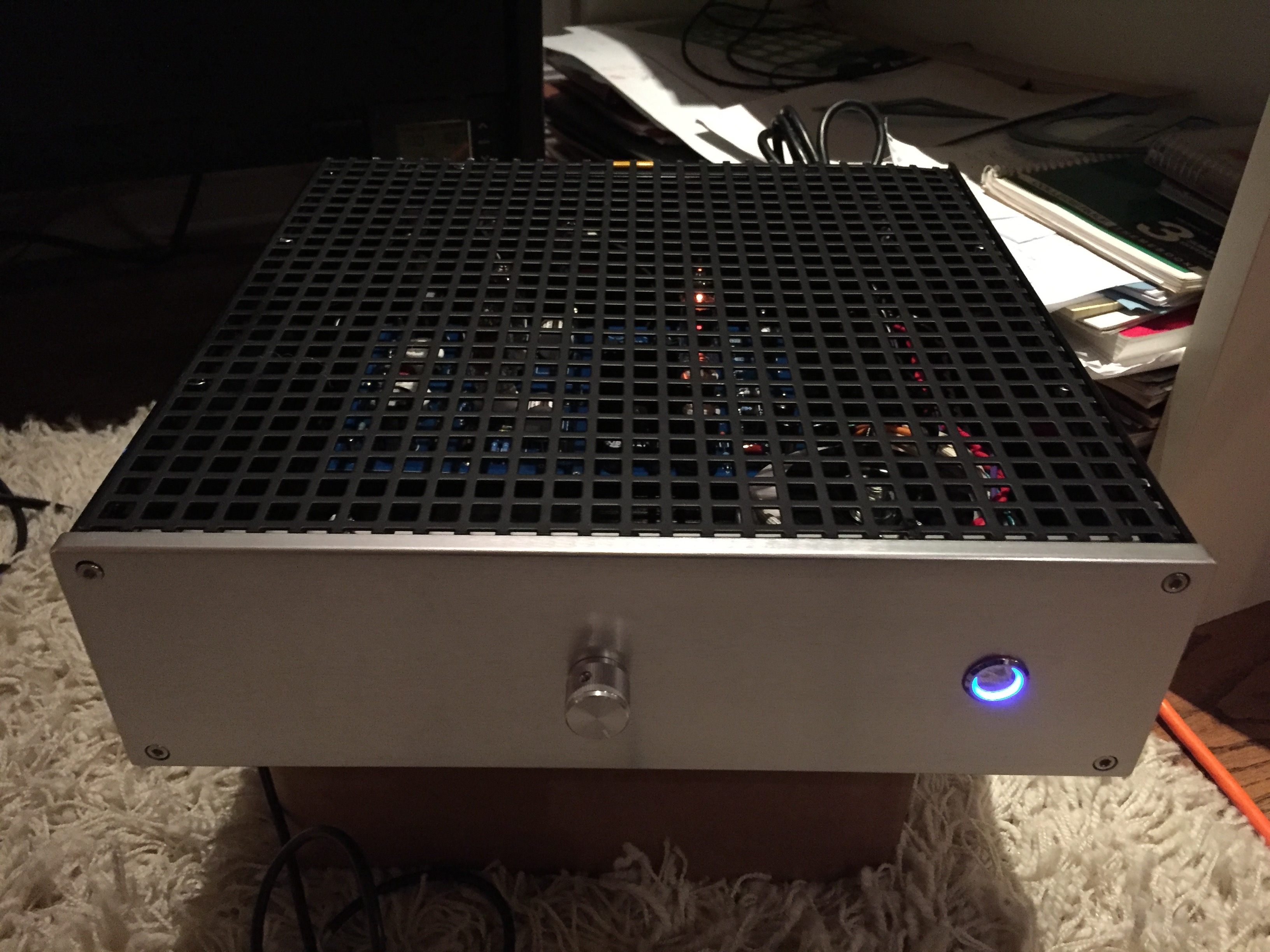Site Links
Howdy, Stranger!
It looks like you're new here. If you want to get involved, click one of these buttons!
Quick Links
Categories
Who's Online (0)
tube buffer / pre for source with sufficient voltage...
I needed a workable solution to incorporate my ST120 amp (currently used for the mids and high freq drivers of my main speakers, active bi-amped with a SS for woofers) into a new A/V set-up. While I wanted to keep tubes for music and A/V concerts, I didn’t want to run the tube amp for when just watching TV (energy use and power tube consumption…) and solutions for switching in and out were less than optimal.
Researching solutions online provided several options for tube buffers, with a range of quality and/or lack thereof. So, being extremely satisfied with my VTA ST120, and the feedback / support provided I connected with Roy at http://www.tubes4hifi.com. I liked the idea of a buffer for in between my active dsp and what will be a SS amp for the main left/rt speakers, and the ability to swap around different pre-amp tubes. I was also looking for a way to make minor adjustments to the preamp tubes (similar to bias adjustments for power tubes) to adjust the working range / affects. We put in a switch to adjust filament heaters between 12.6 to 11.7 volts (as many pre-amp tube sheets state +/- 10% and often ‘best’ +/- 5%). I haven’t yet done a lot of critical listening, but so far so good.
Additionally, while buffers are max unity, many sources now provide significant output to drive amps. So, I thought I’d give it a go. I placed the buffer between my iPhone (yes I know I need a dragon fly 2.1 volts output, vs. approx 1 volt for iPhone) and used the gain / volume control on the buffer and was able to play at a level slightly above ‘normal’ listening levels. Very satisfying, and worth consideration for those with a prized SS amp. My buffer just has one input, but could be built with an input selection as well, just saying.
So, for those whom prefer to have a minimalist source to amp set-up, and with sufficient voltage sorce units, consider skiping the second stage of a pre... (this unit can be reestablished as a pre)
Roy provided a very nice box unit, but not being able to leave well enough alone, I replaced the top with a grated cage (can’t let warm glowing tubes, even pre-amp tubes, go covered up).


Thanks Roy!
Researching solutions online provided several options for tube buffers, with a range of quality and/or lack thereof. So, being extremely satisfied with my VTA ST120, and the feedback / support provided I connected with Roy at http://www.tubes4hifi.com. I liked the idea of a buffer for in between my active dsp and what will be a SS amp for the main left/rt speakers, and the ability to swap around different pre-amp tubes. I was also looking for a way to make minor adjustments to the preamp tubes (similar to bias adjustments for power tubes) to adjust the working range / affects. We put in a switch to adjust filament heaters between 12.6 to 11.7 volts (as many pre-amp tube sheets state +/- 10% and often ‘best’ +/- 5%). I haven’t yet done a lot of critical listening, but so far so good.
Additionally, while buffers are max unity, many sources now provide significant output to drive amps. So, I thought I’d give it a go. I placed the buffer between my iPhone (yes I know I need a dragon fly 2.1 volts output, vs. approx 1 volt for iPhone) and used the gain / volume control on the buffer and was able to play at a level slightly above ‘normal’ listening levels. Very satisfying, and worth consideration for those with a prized SS amp. My buffer just has one input, but could be built with an input selection as well, just saying.
So, for those whom prefer to have a minimalist source to amp set-up, and with sufficient voltage sorce units, consider skiping the second stage of a pre... (this unit can be reestablished as a pre)
Roy provided a very nice box unit, but not being able to leave well enough alone, I replaced the top with a grated cage (can’t let warm glowing tubes, even pre-amp tubes, go covered up).


Thanks Roy!

Comments
Roy put this together, box and tubes at a very fair price
I ultimately ended up getting a couple of these. My son thought it was cool, so… but looks like I now have an extra.
I’ll be bringing this unit to Indiana DIY (looking for offers) and if possible during a down time would be happy to run it as a one-stage minimalist tube-pre. Set-up has an appropriate power supply; toroidal transformer running a 12X4 rectifier tube, and 12AU7s per side. If interested in minimalist pre-amp approach /buffers take a read at: http://www.enjoythemusic.com/magazine/equipment/0708/first_watt_b1_preamplifier.htm, but with glowing valves (tubes).
FYI, compare to http://www.decware.com/newsite/zboxmanual.pdf, which is not even close, and at a lower cost point.
Any questions reply and/or drop me an email at: taj.janes@gmail.com
Andy
"The ZBOX works to restore the dimensionality of the signal that was squashed by the solid state output stage of your device. As a result it enhances detail and weight. Bottom line is that it removes the underlying stress in digital playback allowing you to enjoy music without the associated ear fatigue. The ZBOX is not a filter or masking device. It works by naturally reducing certain distortions while enhancing others through a starved filament technique that runs the tube at about 60% power."
If this is the Decware buffer, I'm stunned they are getting $550 for these. Even if you bought in small quantities, there's about $60 in parts in this thing!